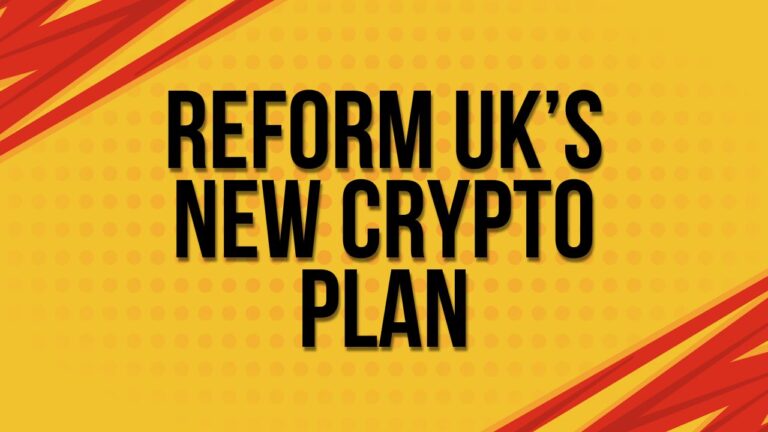Pakistan’s Bold Bitcoin Move Draws IMF Scrutiny
Introduction to Pakistan’s Crypto Ambitions
In a surprising pivot, Pakistan has embraced cryptocurrency with the establishment of a Strategic Bitcoin Reserve and a push for large-scale Bitcoin mining, announced on May 28, 2025, at the Bitcoin Vegas 2025 conference. Led by Bilal Bin Saqib, CEO of the Pakistan Crypto Council (PCC), this move marks a dramatic shift from the country’s earlier cautious stance on digital assets. However, Pakistan’s bold crypto strategy has raised eyebrows at the International Monetary Fund (IMF), which has a history of scrutinizing nations adopting Bitcoin under its bailout programs. With Pakistan heavily reliant on IMF loans, what does this mean for its economic future and global crypto regulation? Let’s unpack the details, implications, and potential challenges of this high-stakes gamble.
Pakistan’s Strategic Bitcoin Reserve: A Game-Changing Move
On May 28, 2025, Bilal Bin Saqib, Pakistan’s Special Assistant to the Prime Minister for Crypto and Blockchain, unveiled plans for a government-led Strategic Bitcoin Reserve at Bitcoin Vegas 2025. Speaking to an audience that included U.S. Vice President JD Vance and Trump family members, Saqib declared, “Pakistan is no longer defined by its past. It is being reborn as a forward-looking hub of digital innovation.” The reserve, backed by a national Bitcoin wallet holding state-owned digital assets, signals Pakistan’s long-term commitment to decentralized finance (DeFi). Key initiatives include:
Bitcoin Mining Push: Allocation of 2,000 megawatts of surplus electricity for Bitcoin mining and AI data centers, aiming to monetize excess energy and attract foreign investment.
Pakistan Digital Assets Authority (PDAA): A new regulatory body to oversee digital finance, ensure investor protection, and align with Financial Action Task Force (FATF) guidelines.
Economic Diversification: Leveraging Pakistan’s 40 million crypto wallets and $300 billion in annual crypto trading volume to boost foreign exchange reserves, currently at $14.3 billion.
Pakistan’s crypto pivot follows the U.S.’s establishment of its own Bitcoin reserve under the Trump administration, with Saqib citing American policies as inspiration.
Why the IMF Is Watching Closely
Pakistan’s crypto ambitions come under the shadow of its ongoing $7 billion Extended Fund Facility (EFF) with the IMF, with $2 billion already disbursed as of May 2025. The IMF has expressed concerns about cryptocurrency adoption in countries under its programs, as seen in its 2023 policy paper on crypto-asset risks, which highlighted volatility and potential misuse. Here’s why Pakistan’s move has drawn scrutiny:
Economic Risks: The IMF warns that Bitcoin’s price volatility could destabilize Pakistan’s fragile economy, already burdened by high debt (over 90% of GDP) and inflation.
Terror Financing Concerns: Pakistan’s history of FATF grey-listing for weak anti-money laundering (AML) measures raises fears that crypto’s anonymity could enable illicit financial flows, similar to the “Bitcoin shakers” model used by groups like Hamas.
IMF Precedents: The IMF’s 2024 agreement with El Salvador required the country to freeze its Bitcoin reserves and exit the Chivo wallet, signaling potential restrictions for Pakistan in future reviews.
Posts on X reflect mixed sentiments, with some users questioning the feasibility of Pakistan’s mining plans due to high electricity costs and IMF dependency, while others see it as a bullish signal for Bitcoin’s global adoption.
Geopolitical and Economic Implications
Pakistan’s crypto strategy is not just an economic move—it’s a geopolitical chess play. Key implications include:
Trump-Linked Deal: The PCC’s April 2025 agreement with World Liberty Financial (WLF), a U.S. crypto firm 60% owned by Donald Trump’s family, has raised eyebrows. The presence of Pakistan’s Army Chief, General Asim Munir, at the signing suggests strategic motives, possibly to gain favor in Washington amid tensions with India.
India’s Opposition: India, a key IMF board member, abstained from voting on Pakistan’s $1 billion tranche in May 2025, citing risks of fund misuse for terrorism. This could complicate future IMF approvals.
Economic Stabilization: Pakistan aims to use crypto to hedge against inflation and bolster reserves, but the IMF’s conditions—such as taxing crypto gains and regulating trading—may limit flexibility.
The deal with WLF, combined with Pakistan’s military involvement, has sparked speculation about deeper strategic goals, including sanctions evasion or diplomatic leverage.
Challenges and Risks Ahead
Pakistan’s crypto push faces significant hurdles:
IMF Restrictions: The IMF’s next review in late 2025 could impose conditions like those on El Salvador, such as halting Bitcoin accumulation or tightening regulations, potentially derailing Pakistan’s plans.
Energy Concerns: Despite claims of surplus electricity, critics argue Pakistan’s high electricity costs and unreliable grid make large-scale mining unfeasible.
Regulatory Compliance: The PDAA must align with FATF standards to avoid sanctions, a challenge given Pakistan’s history of financial opacity.
Public Perception: Saqib has acknowledged Pakistan and Bitcoin’s “bad PR,” with critics warning that the crypto push could be a publicity stunt rather than a viable economic strategy.
What’s Next for Pakistan and Global Crypto Regulation?
Pakistan’s Bitcoin reserve and mining initiatives position it as a potential crypto hub in South Asia, but IMF scrutiny could temper its ambitions. The PDAA’s focus on FATF-compliant regulations may help mitigate concerns, but the IMF’s cautious stance on crypto suggests tougher conditions in future loan reviews. Globally, Pakistan’s move could inspire other emerging markets to explore Bitcoin as a strategic asset, though IMF oversight will remain a key factor.
For now, Pakistan is forging ahead, with Saqib calling for global crypto builders to “come build wallets for the unbanked” and “tokenize land” in Pakistan. The success of this strategy will depend on balancing innovation with regulatory compliance and navigating the geopolitical complexities of IMF and FATF oversight.
Conclusion
Pakistan’s bold embrace of Bitcoin through a Strategic Reserve and mining initiatives marks a historic shift, but it comes with risks under the IMF’s watchful eye. As the country seeks to redefine itself as a crypto-forward nation, it must address concerns about economic stability, terror financing, and regulatory compliance. With 40 million crypto users and a tech-savvy youth, Pakistan has the potential to lead in digital finance, but the path forward will require careful navigation of global financial scrutiny.
For the latest updates on Pakistan’s crypto journey and its impact on global markets, follow our blog and join the conversation on X.
Keywords: Pakistan Bitcoin Reserve, IMF scrutiny, Pakistan Crypto Council, Bilal Bin Saqib, Bitcoin mining, FATF compliance, World Liberty Financial, decentralized finance, crypto regulation, Extended Fund Facility.







